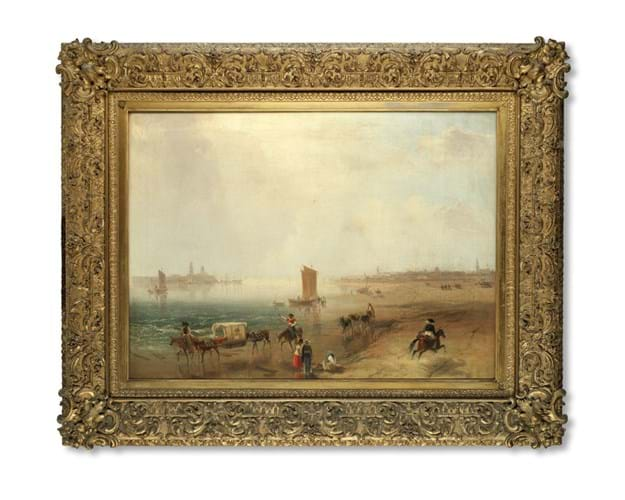
The artist, who lived a short but turbulent life, was mysteriously murdered on his second trip to Mexico in 1842, possibly in an argument over a property deal.
However, after spending five years there from 1831-36, Egerton created a famous set of lithographs based on the sketches he made while travelling around the country.
Published in 1840, Egerton’s Views in Mexico featured 12 coloured plates accompanied with descriptions. But the artist also produced a series of oils and watercolours of his recorded views including 13 large-scale works executed after he returned to London. It is one of the latter that has now been consigned to Bonhams after having been owned by the same family for over 120 years.
At the auction on February 7, it is estimated at £200,000-300,000.
“The coast is extremely dangerous”
The 2ft 5in x 3ft 3in oil on canvas titled Vera Cruz, and Castle of San Juan D’Ulloa depicts the principal port of the Gulf of Mexico together with the fortress built on a nearby island by the Spanish in the 17th century. The castle remained the last Spanish stronghold after Mexico's independence in 1821 until it was finally surrendered in 1825.
A lithograph of the same image appears in Egerton’s Views in Mexico where the artist gives a detailed description of the scene – making this work one of the few surviving topographical paintings by the artist where the location is known.
“The coast is extremely dangerous, and the harbour itself affords no shelter from the violence of the north winds which prevail generally from November to February…. “The Castle of San Juan is built upon a small island, upon which is likewise situated a lighthouse. It is a strong fortress, commanding the city, as well as protecting the approaches to it by sea, and has been converted, on several occasions, into an offensive power, instead of a protecting one.”
Egerton also explains the appearance of the racing horseman on the beach in the scene: “The Correo (postman), a class of men who seldom spare horseflesh, gallops along, regardless of the heat, or of the nature of the road: the white handkerchief flapping about under his hat is a contrivance in general use among riders, motion being given to the hanging ends, in travelling along, a current of air is produced, which is cooling to the face.”





